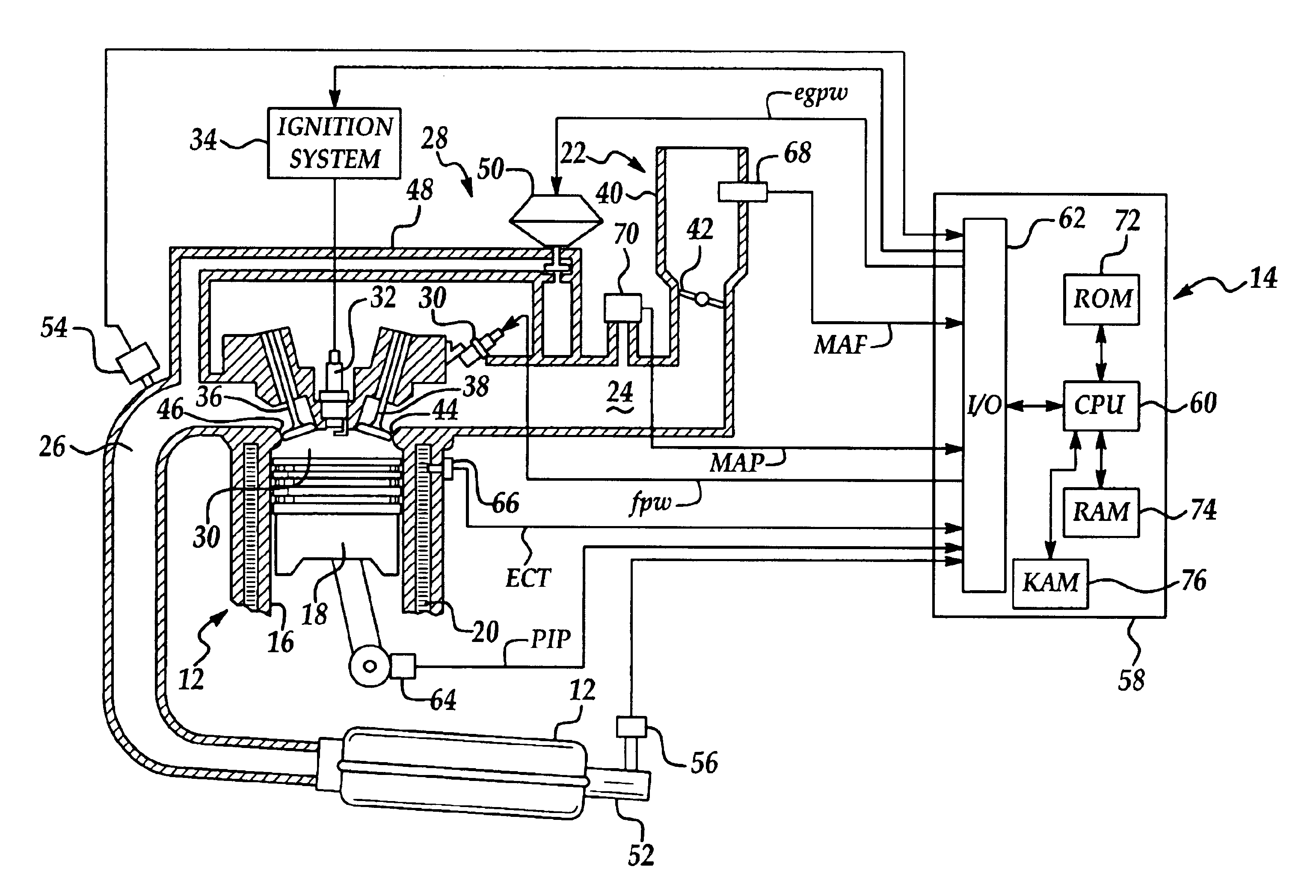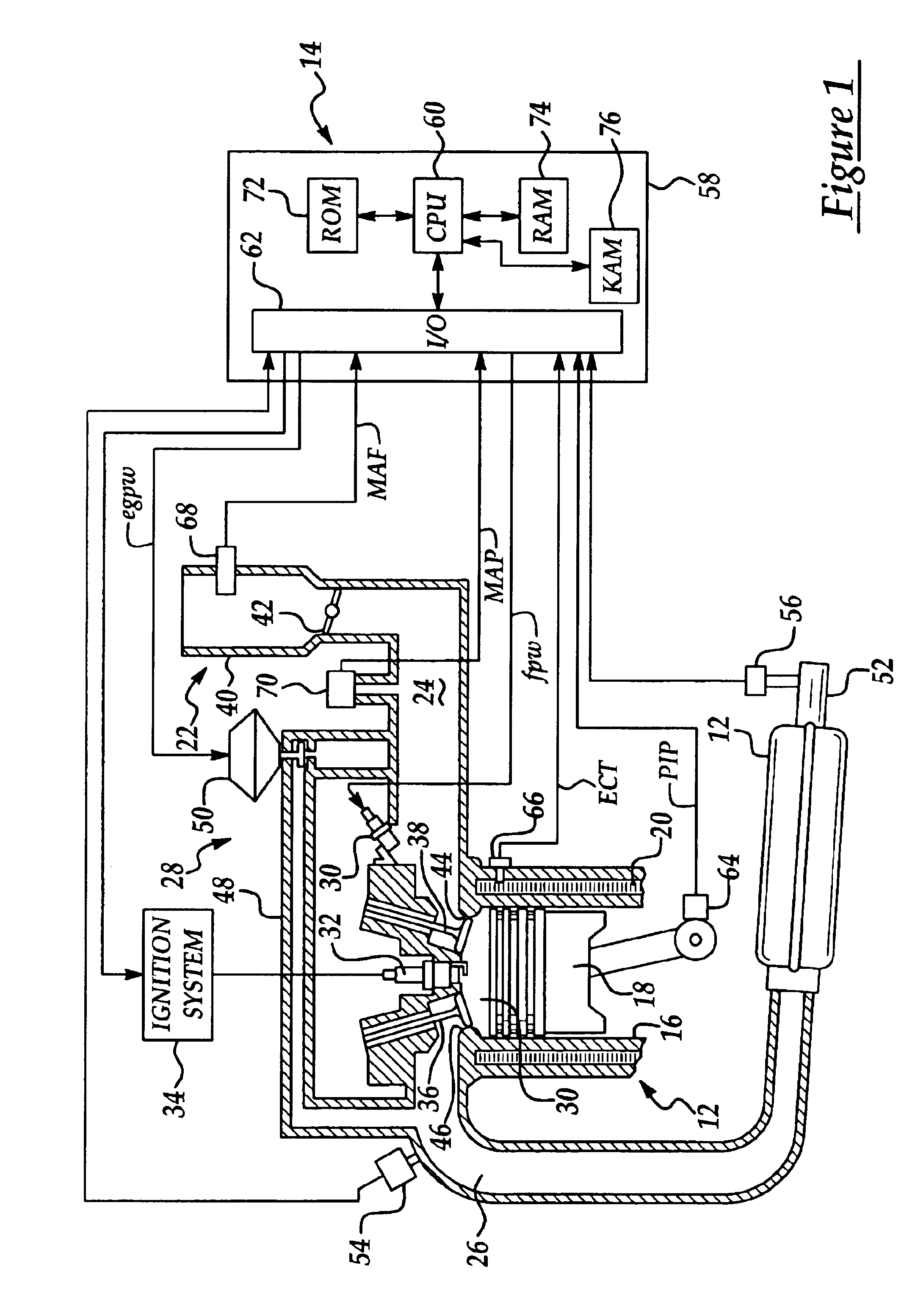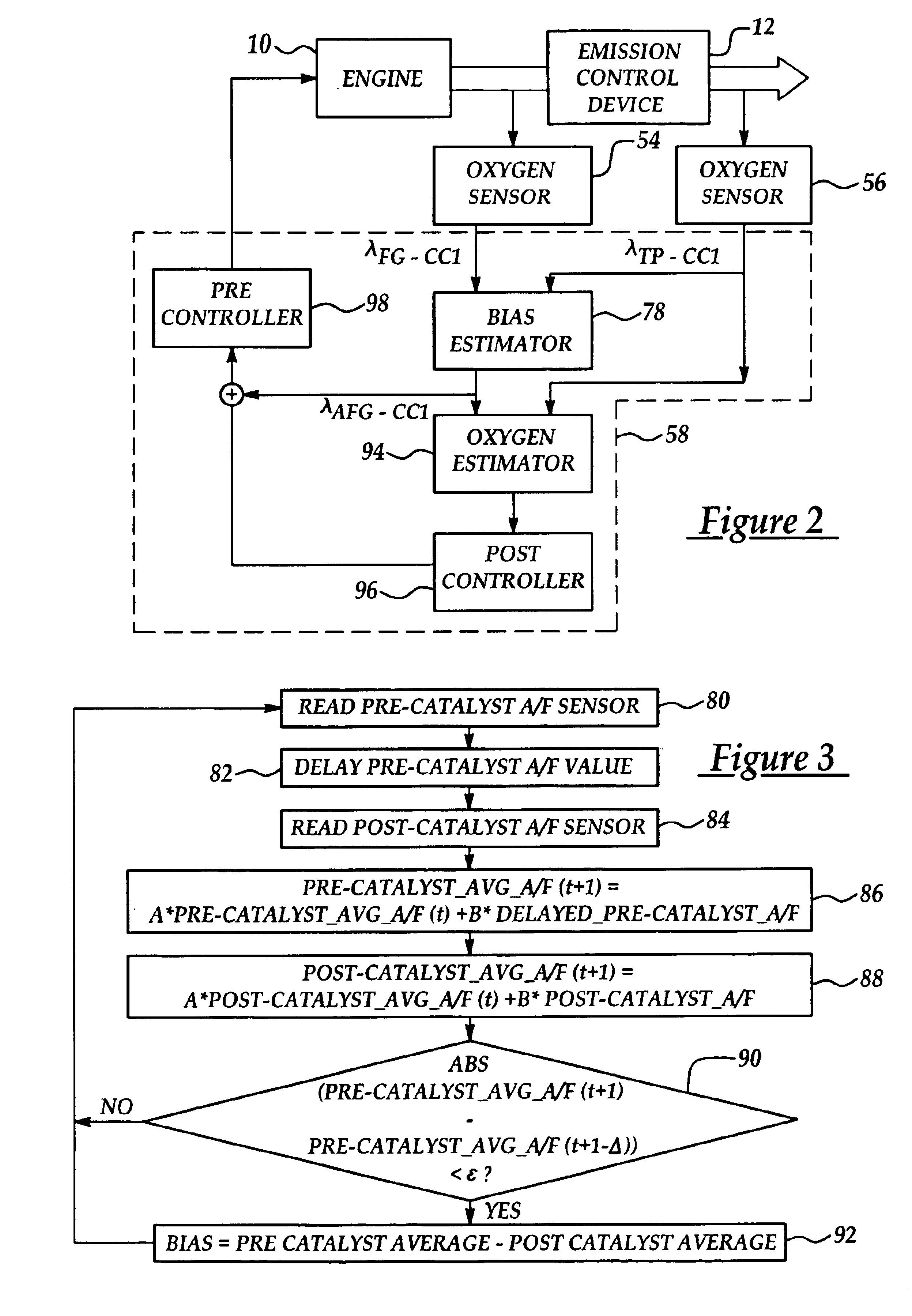Control of oxygen storage in a catalytic converter
a technology of catalytic converter and oxygen storage, which is applied in the direction of electrical control, process and machine control, instruments, etc., can solve the problems of providing erroneous signals regarding the engine air fuel mixture, presenting its own problems, and a relatively long time delay for exhaust gas, so as to achieve maximum conversion efficiency
- Summary
- Abstract
- Description
- Claims
- Application Information
AI Technical Summary
Benefits of technology
Problems solved by technology
Method used
Image
Examples
Embodiment Construction
Referring now to the drawings wherein like reference numerals are used to identify identical components in the various views, FIG. 1 illustrates an internal combustion engine 10, an emission control device 12, and a system 14 in accordance with the present invention for controlling engine 10 in order to maintain an optimal oxygen storage level in device 12. By maintaining an optimal oxygen storage level in device 12, maximum engine robustness and minimum emissions are obtained.
Engine 10 is designed for use in a motor vehicle. It should be understood, however, that engine 10 may be used in a wide variety of applications. Engine 10 provides motive energy to a motor vehicle or other device and is conventional in the art. Engine 10 may define a plurality of combustion chambers or cylinders 16 and may also include a plurality of pistons 18, coolant passages 20, a throttle assembly 22, an intake manifold 24, an exhaust manifold 26, and engine gas recirculation (EGR) system 28, fuel inject...
PUM
 Login to View More
Login to View More Abstract
Description
Claims
Application Information
 Login to View More
Login to View More - R&D
- Intellectual Property
- Life Sciences
- Materials
- Tech Scout
- Unparalleled Data Quality
- Higher Quality Content
- 60% Fewer Hallucinations
Browse by: Latest US Patents, China's latest patents, Technical Efficacy Thesaurus, Application Domain, Technology Topic, Popular Technical Reports.
© 2025 PatSnap. All rights reserved.Legal|Privacy policy|Modern Slavery Act Transparency Statement|Sitemap|About US| Contact US: help@patsnap.com



